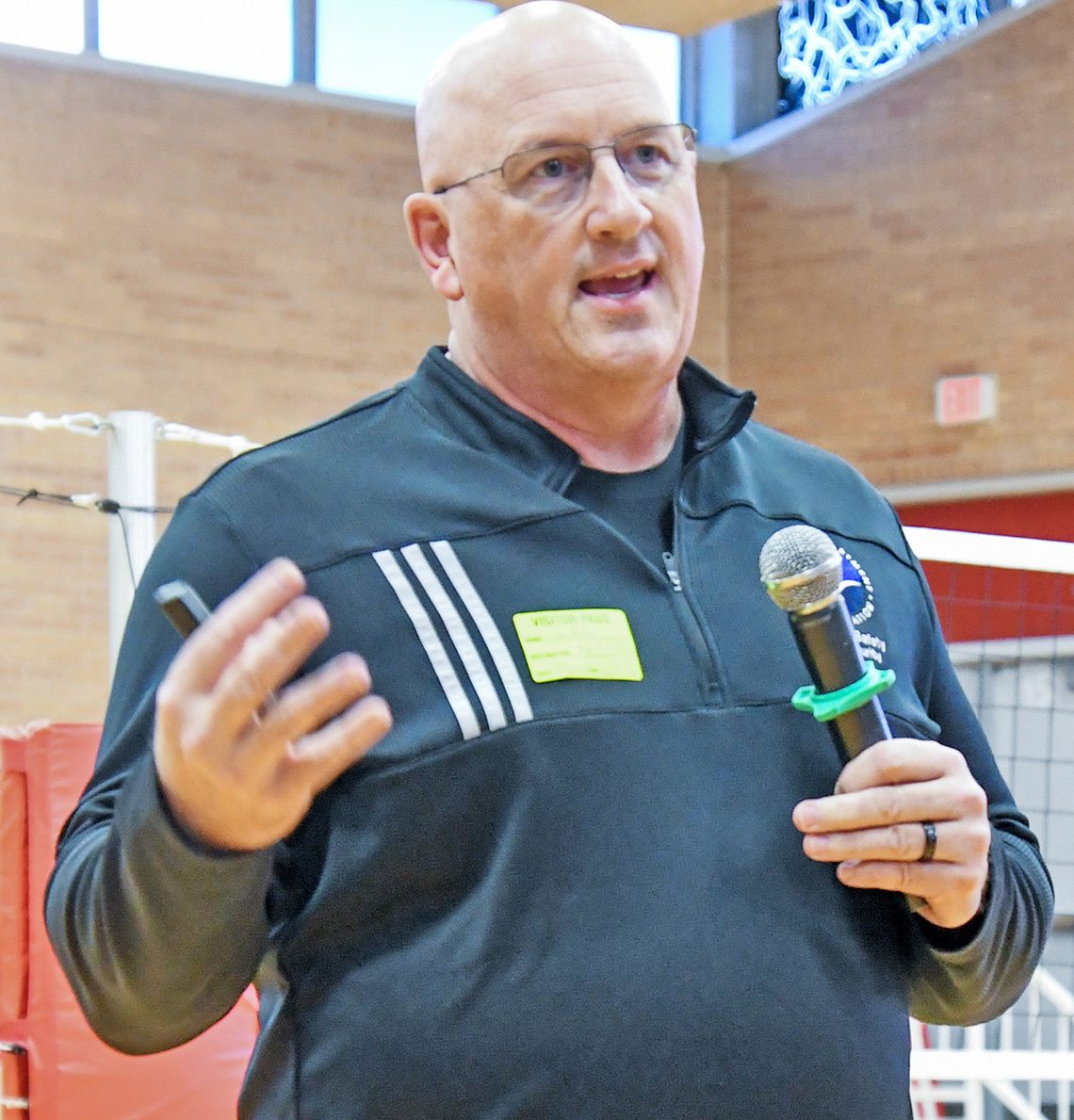Tying into America’s Safe Schools Month, Jay Martin, the Nebraska Department of Education, School Safety, and Security director, spoke to students, staff, and parents at Sandy Creek Oct. 21.
In the afternoon, Martin spoke to students in grades fifth through 12th, while in the evening, he spoke to parents.
Martin talked about digital safety, beginning his presentation about how we don’t give our kids the keys to our cars at a young age and let them drive, so why throw them into the digital pool without teaching them safety first.
Digital media began well before cell phones, starting with the radio, then TV, the first official smartphone in 2007, and now dealing with artificial intelligence (AI).
Martin says above them all, AI has caused the most issues and has developed faster than other media, having grown exponentially within a few months, compared to several years.
Today, kids have lost connection with others, with many having conversations through their phones instead of face-to-face.
Martin explained how all of the apps available today, such as Facebook, Snapchat, and Instagram, are competing with each other for attention.
Using the stimulus-reward course, kids, especially those between 9 and 14 years old, are subject to becoming addicted easily and losing essential human aspects, such as knowing how to show and deal with their emotions.
Martin compared the addiction to being like a hit of cocaine—there’s a hit of stimulus and while it’s a 50-50 chance of getting that hit, once it’s consumed the person wants more.
And the algorithms kids are viewing aren’t objective, either. Algorithms are built for a person based on how long they stay on a video, or what they like or share.
The longer a person is on a certain video, the algorithm begins to feed more of the same type of video into a feed.
Martin said this has led to a lot of the depression and anxiety factors in kids today, showing a video example of how young girls are often exposed to hurtful body images; however, those messages of needing to be skinny or look this way or that are given off in a “positive” light.
That “positive” message can actually be damaging to young girls and how they view themselves, or anyone for that matter.
“I told your kids today that if they’re looking for perfection to look in the mirror, because that’s perfect and they don’t need to change anything,” Martin said.
It’s not just those messages hurting kids today. Cyberbullying is still a huge factor in many kids committing suicide.
During his presentation to the students, Martin had a few of them do an exercise where one student faced the monitor with lines they had to say, while the other student faced them, but could not see the screen.
The lines the student said were telling the other student they were ugly and how no one liked them.
Martin said the girl who said the lines was hesitant to even say them, and teared up.
He added how when he did the same exercise at other schools, he’s had students cry and break down for what they said, and felt sorry for the words even though it was only an exercise.
Cyberbullying is the opposite, when a person can sit behind a screen and say those mean things to another person, without the aftermath of human interaction and emotions.
AI is causing extra issues because anyone who can run the technology can create a fake person, whether it’s to entertain or hurt.
Martin gave an example of a TikTok creator who digitally added Tom Cruise’s face to his own, making it look as if Cruise was making the videos himself.
He added how with today’s technology, it takes just three seconds of someone’s voice posted online, and that person can be recreated through AI and shown in whatever light the person making the videos wants them to be in.
“We share too much online,” Martin said.
He added that as adults and parents, we can engage with kids and help them see the unsafe features online media has, but in the end, it’s up to the kids to make the decision to be more present in reality and not online.
For adults, he said to be present, be open to other opinions and debate, and don’t let devices control your destiny.
Talk to kids about time management online/on their phones, and when it comes to age, he highly suggests kids under 2 should not be on any device, and regulate how younger ages use technology.
Getting kids involved with physical activities, communicating in person, and focusing on study time are good ways to get the phone down and the person up and in the moment.
“ Create, do, and be something with everything thrown at us in life,” Martin said.



